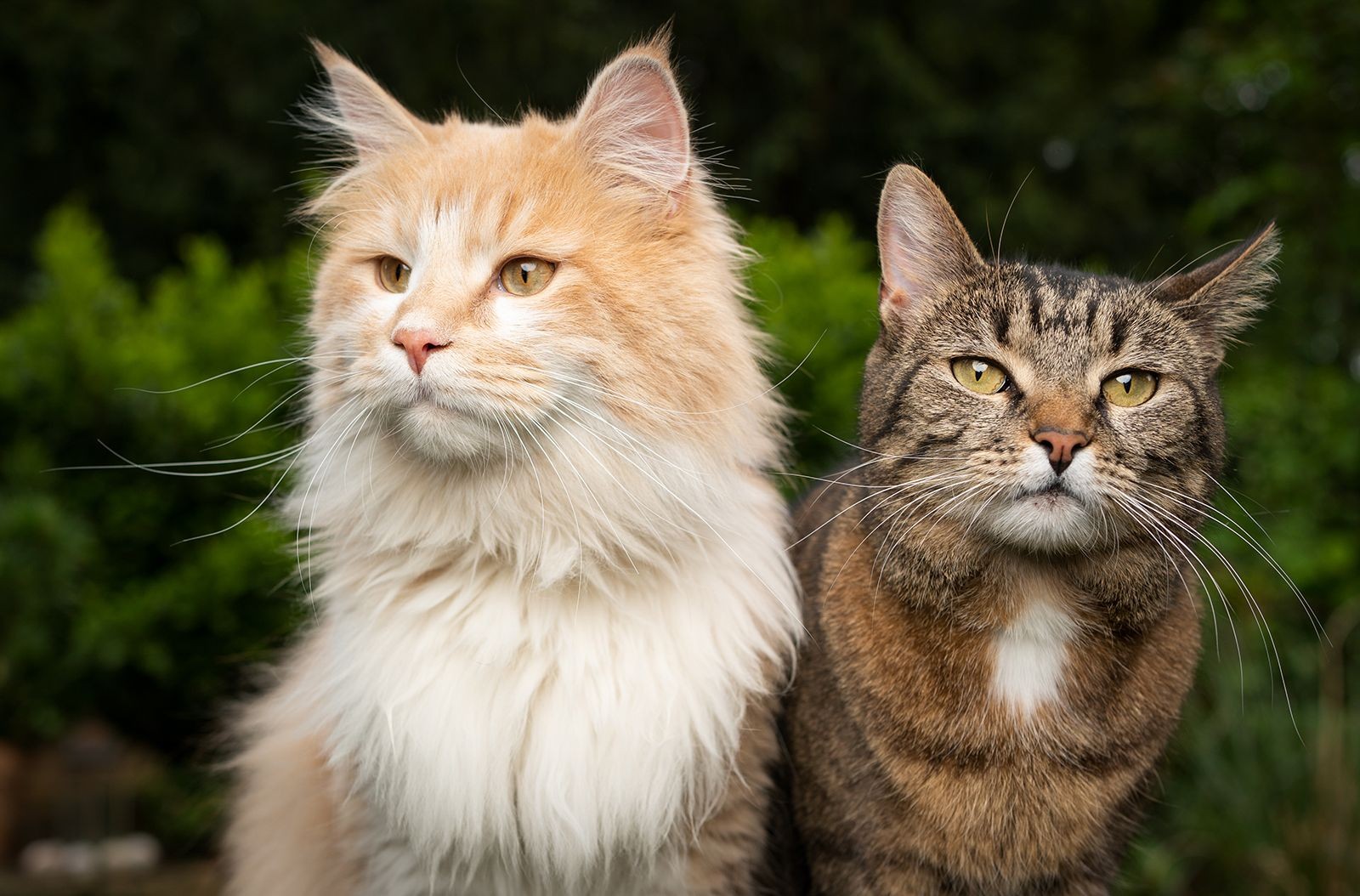What Is A Cat? Exploring the world of felines, from their history to their behavior, is fascinating, and WHAT.EDU.VN can help you learn more. This comprehensive guide covers everything you need to know about domestic cats, their characteristics, and their unique traits. Discover all you need to know about cats, felines, house cats, cat breeds, cat behavior, and feline care.
1. Defining the Domestic Cat
The domestic cat, scientifically known as Felis catus, is a small carnivorous mammal within the Felidae family. Often referred to as a house cat, these animals have coexisted with humans for thousands of years. Their agility, hunting prowess, and companionship have made them beloved pets worldwide.
2. Evolutionary Origins of Cats
The evolutionary journey of cats began over 30 million years ago with Proailurus, the first felid-like mammal. These ancient creatures evolved into what we now recognize as the Felidae family, encompassing a diverse range of species from the roaring lions and tigers to the purring domestic cats. Their adaptability and hunting skills have allowed them to thrive across various environments.
2.1. Early Cat Ancestors
Cats resembling today’s felids first appeared during the early Pliocene Epoch, approximately 5.3 to 3.6 million years ago. These early cats shared fundamental traits like sharp fangs, claws, flexible spines, and strong muscles. These adaptations helped them survive and adapt to changing environments.
2.2. Domestication Process
Unlike dogs, which were domesticated over 30,000 years ago and have undergone significant changes, cats have remained remarkably similar to their wild ancestors. The African wildcat (Felis silvestris lybica) is considered the closest relative to the domestic cat, with minimal genetic differences. This similarity allows cats to thrive independently, contributing to the presence of feral cat populations.
3. History of Cats and Humans
The relationship between cats and humans began around 15,000-10,000 years ago in the Middle East with the advent of agriculture. Cats were drawn to human settlements due to the abundance of rodents feeding on crops and stored grains. This symbiotic relationship evolved as humans recognized the value of cats in controlling pests.
3.1. Ancient Egypt: Cats as Deities
In ancient Egypt, cats held a special status, transitioning from pest controllers to revered symbols of divinity. They were cherished pets, seen as divine protectors, and talismans of good fortune. Cat cults and temple worship emerged, with cats adorning art and artifacts. The discovery of cat mummies further highlights their cultural importance.
3.2. Cats in Other Cultures
Cats’ presence extended to other cultures, with evidence dating back to 1600 BCE in Crete. In Greece, they appeared around the 5th century BCE, and in China, around 500 BCE. By 600 CE, cats were introduced to the Arab world and Japan. The earliest records of cats in Britain date back to 936 CE, with laws enacted to protect them.
4. Cats in Religion and Literature
Cats have been featured in various religions and literature throughout history. While only mentioned once in the Bible’s Letter of Jeremiah, they appear in Norse mythology as the chariot-pullers of the goddess Freyja. Egyptians revered Bastet, a cat-headed goddess. The Cat-Book Poems from Ayutthayan-period Siam contain illustrations and descriptions of various cats.
4.1. Associations with Witchcraft and Superstition
Cats have been historically linked to witchcraft, particularly black cats, leading to mistreatment. Superstitions involving cats vary across cultures; in the West, black cats are considered unlucky, while in Japan, they symbolize good fortune.
4.2. Cats in Modern Entertainment
Cats are prevalent in modern entertainment, from nursery rhymes and stories to popular musicals like Andrew Lloyd Webber’s “Cats.” They appear in fables by Aesop and legends like Dick Whittington, showcasing their enduring cultural presence.
5. Identifying Cat Breeds
Identifying cat breeds often relies on basic physical characteristics such as color, coat pattern, size, and hair length. Unlike dogs, the differences between cat breeds can be subtle, making these categories helpful for identification.
5.1. Breed Origins and Standards
Cat breeds are groups of related felines sharing similar physical traits or geographic origins. As cats spread worldwide, they adapted to unique environments, passing these adaptations to their offspring. Breed standards are written guidelines defining ideal attributes, drafted by breeders and approved by cat associations.
5.2. Genetic Studies and Breed Origins
Recent genetic studies have helped trace the origins of many recognized breeds, identifying four primary regions: Asia, Western Europe, East Africa, and the Mediterranean basin.
6. Colors and Patterns in Cats
Mutation has given rise to the vibrant spectrum of coat colors seen in cats today. Genetically, all domestic cats are tabbies like their wildcat ancestors, though modifying genes can mask this pattern.
6.1. Common Tabby Patterns
- Classic (Blotched) Tabby: Wide stripes with swirls or “bull’s-eyes” on the sides.
- Mackerel Tabby: Thinner stripes resembling fish bones.
- Ticked Tabby (Agouti): Alternating dark and light bands on each hair strand.
- Spotted Tabby: Dark spots on a lighter background with tabby markings on the face, legs, and tail.
6.2. Other Important Factors
- White Spotting Factor: A dominant gene causing white spots or patches.
- Solid: A recessive gene leading to a solid color.
- Dilution: A recessive gene lightening hair color (e.g., black to gray).
- Colorpoint: A form of albinism distributing color to cooler areas (ears, face, feet, tail).
- Bicolor: A pattern of white areas with other colors or patterns.
- Tricolor: A combination of three colors, such as calico (orange, black, and white).
7. Tortoiseshell Cats: Genetic Peculiarities
Orange coloration in cats is sex-linked, with the gene located on the X chromosome. Female cats, having two X chromosomes, can inherit both orange and black genes, leading to the tortoiseshell pattern. Male cats, with one X chromosome, can only be orange or black unless they have a rare XXY chromosome mutation, which usually results in sterility.
8. Body Types and Features
Cat breeds fall into three general body types: cobby (compact and broad), svelte (slim and lithe), and moderate (intermediate). Length and weight vary, with males typically around 28 inches and females around 20 inches. Healthy weight ranges from 6 to 12 pounds, though it can differ based on breed and sex.
8.1. Coordination and Musculature
Cats are digitigrade animals, walking on their toes, enhancing their silent movement. They typically walk or run using a four-beat gait, with each paw hitting the ground at a different point. The vertebrae are connected by muscles, providing agility, and the shoulder joints allow for versatile foreleg movement.
8.2. Teeth and Claws
Cats’ teeth are adapted for stabbing, anchoring, and cutting, lacking flat-crowned crushing teeth. Their claws retract when not in use, spreading the toes for enhanced grip and defense. This claw-sheathing mechanism is common among felids, excluding cheetahs.
8.3. Ears and Tail
Cats have acute hearing with outer ears equipped with muscles allowing 180-degree swivel. The tail, an extension of the spine, contains around 20 caudal vertebrae (except in breeds like Manx and Japanese Bobtail). It serves for balance and communication.
9. Skin, Hair, and Coat Types
The cat’s skin comprises the dermis and epidermis. Erector muscles attached to hair follicles enable bristling. Most cats have three hair types: guard, awn, and down. Guard hairs protect the coat, while down and awn hairs provide insulation.
9.1. The Five Senses of Cats
Cats possess five senses, with a widespread belief in a “sixth sense” that allows them to navigate home over long distances.
10. Touch: The Role of Whiskers
The sense of touch is highly developed in cats, with whiskers (vibrissae) acting as vital touch receptors. Eyebrows and hairs on cheeks, chin, legs, and ears are also sensitive to vibrations, aiding movement and hunting in low light. Paw pads are also acutely sensitive.
11. Hearing: Detecting High Frequencies
Cats have exceptional hearing, with mobile ears that can move independently to pinpoint sounds. Their hearing is tuned to higher frequencies, detecting sounds both above and below the human range.
11.1. “Seeing Martians”: Superior Hearing
Superior hearing may explain why cats sometimes appear to “see Martians,” reacting to sounds imperceptible to humans.
12. Taste: Limited Sweet Perception
Cats have relatively few taste receptors (473 compared to humans’ 9,000), reacting to salty, sour, and bitter tastes but minimally to sweet tastes. They rely on protein-based compounds, and fats are perceived as smells rather than tastes.
12.1. The Importance of Smell in Taste
Smell significantly influences a cat’s enjoyment of food, leading them to prefer warm food with strong aromas.
13. Smell: Superior Olfactory Abilities
Cats have approximately 200 million odor sensors compared to humans’ 5 million, making their sense of smell crucial for sensing prey and assessing food. Cats also possess a Jacobson’s organ, which enhances their sense of smell and taste.
13.1. Jacobson’s Organ and Flehming
The Jacobson’s, or vomeronasal, organ is located between the nose and palate. Cats access this sense through “flehming,” a grimace-like expression, to examine interesting odors.
14. Sight: Crepuscular Vision
Cats are crepuscular, active at dawn and dusk. Their pupils adjust to light intensity, and they have nictitating membranes for eye protection. Color perception is not highly developed, as detecting movement is more crucial for survival.
14.1. “Glowing Eyes”: The Tapetum Lucidum
The “glowing eyes” phenomenon results from light reflecting off the tapetum lucidum, a cell layer behind the retina. This allows cats to use ambient light efficiently, requiring only one-sixth of the illumination humans need to see well.
15. The “Sixth Sense” Debate
While anecdotal accounts claim cats possess a “sixth sense,” allowing them to find their way home over long distances, experts remain skeptical. Theories suggest cats may use Earth’s magnetic fields to navigate.
16. Behavior: Social Dynamics
Cats are often viewed as aloof, but they are social animals. They form close-knit groups, especially between mothers, kittens, and related females. Unneutered males roam widely in search of mating opportunities.
16.1. Elimination Habits
Burying urine and feces is normal behavior, with cats often avoiding dirty litter boxes. Dominant cats may spray urine and leave wastes uncovered to mark territory.
16.2. Sexual Behavior
Cats reach reproductive age between 7 and 12 months. Unaltered cats spend much time seeking partners, fighting rivals, and raising offspring. Females can enter heat multiple times a year and are induced ovulators, increasing their chances of conceiving. Gestation lasts about 65 days, and kittens are born blind, deaf, and helpless.
17. Body Language and Communication
Cats communicate through various body postures and vocalizations.
17.1. Common Body Language Signals
- Arching: Indicates fear or anger, creating the impression of greater size.
- Bristling: Makes the cat look bigger and more menacing.
- Crouching: Signals fear or submission, or preparation to pounce.
- Kneading: A form of scent marking via paw pad scent glands.
- Tail Raising: A friendly greeting, indicating calmness and confidence.
- Swishing/Lashing: Indicates anger or predatory intent.
- Tucking: Signals fear, submission, or defeat.
- Twitching: Indicates mild irritation when the tail tip twitches.
- Swiveling: A sexual invitation from a female in heat.
- Spraying: Marking behavior, signaling territorial feelings or stress.
- Scent Marking: Rubbing on objects to leave scent from glands on the temples, mouth, chin, and tail.
17.2. Vocal Communication
Cats use diverse sounds to communicate.
- Meowing: Greetings, pleas, or complaints, often indicating hunger, loneliness, or boredom.
- Purring: Usually signifies contentment but can also indicate distress.
- Hissing: A warning sound indicating fear or anger.
- Spitting: A sharper, more explosive sound than hissing.
- Growling: A warning sound from low rumbles to open-mouthed growls.
- Screaming: Indicates extreme anger or fear.
- Yowling: A plea or demand indicating hunger, boredom, pain, or being in heat.
- Chattering: A staccato sound when spotting unreachable prey.
- Mating Calls: Loud, long yowls from females in heat.
18. Heredity: Genes and Chromosomes
Genes determine and transmit hereditary characteristics. Cats have 19 pairs of chromosomes, including sex chromosomes (XX for females, XY for males).
18.1. Dominant and Recessive Genes
Cats inherit half their genetic makeup from each parent. If both gene copies are the same, the trait is expressed. If different, the dominant gene masks the recessive gene. Recessive genes are only expressed if two copies are inherited.
18.2. Mutation and New Breeds
Genes can mutate, leading to variations in conformation, color, and coat. Some mutations have positive or neutral effects, while others, like the folded ears in Scottish Folds, can cause health issues.
19. Common Questions About Cats
Understanding cats can often lead to many questions. Here are some frequently asked questions and their answers:
19.1. What Family Does the Domestic Cat Belong To?
The domestic cat (Felis catus) belongs to the Felidae family, which also includes lions, tigers, and pumas. It is the smallest member of this family.
19.2. What Is the Lineage of Cats?
Studies suggest two main lineages: one appeared in Asia Minor around 6,400 years ago, spreading to Europe, and the other in Egypt between 6,400 and 1,000 years ago, spreading throughout the Mediterranean.
19.3. How Big Is a Full-Grown Cat?
The average weight ranges from 2.7 to 4.5 kg (6 to 10 pounds), but some cats can weigh up to 12.7 kg (28 pounds). Average lengths are 71.1 cm (28 inches) for males and 50.8 cm (20 inches) for females.
19.4. Why Do Cat Eyes Glow in the Dark?
Cat eyes shine due to a layer of guanine in the retina, which enhances light sensitivity. Their pupils expand or contract based on light density.
19.5. Why Do Cats Purr?
Purring is a continuous, rattling hum often associated with pleasure. However, cats also purr when injured or in pain.
20. Why Ask Questions on WHAT.EDU.VN?
Do you have more questions about cats or other topics? WHAT.EDU.VN is here to provide quick and accurate answers. Our platform offers a free way to ask any question and receive helpful responses from knowledgeable individuals.
20.1. Free and Quick Answers
At WHAT.EDU.VN, you can ask questions without any cost and get responses quickly.
20.2. Knowledgeable Community
Our community consists of experts and enthusiasts who are ready to share their knowledge and help you find the answers you need.
20.3. Easy-to-Use Platform
The WHAT.EDU.VN platform is designed to be user-friendly, making it easy for anyone to ask questions and receive answers.
21. Overcoming Challenges in Finding Answers
Finding reliable answers can be challenging, especially when you need information quickly. WHAT.EDU.VN addresses these challenges by providing a platform where you can:
- Get immediate answers to your questions.
- Receive information from knowledgeable sources.
- Avoid the costs of professional consultations.
- Connect with a community of experts and enthusiasts.
22. Services Provided by WHAT.EDU.VN
WHAT.EDU.VN offers a range of services to help you find the information you need:
- A free platform to ask any question.
- Fast and accurate answers from experts.
- Easy-to-understand and helpful information.
- A community to exchange knowledge.
- Free consultations for simple issues.
23. Call to Action
Have more questions about cats or any other topic? Don’t hesitate! Visit WHAT.EDU.VN today to ask your questions and get the answers you need for free. Join our community and discover a world of knowledge at your fingertips.
Contact Us:
- Address: 888 Question City Plaza, Seattle, WA 98101, United States
- WhatsApp: +1 (206) 555-7890
- Website: WHAT.EDU.VN
24. User Intent Keywords
- Cat definition
- Cat behavior
- Cat breeds
- Cat care
- Feline characteristics
25. LSI Keywords
- Domestic animals
- Mammalian pets
- Feline anatomy
By exploring these aspects of feline life, one can gain a greater appreciation for these fascinating and beloved members of our world. Whether you’re curious about their evolutionary history or seeking tips for caring for your own feline friend, what.edu.vn is here to assist.


